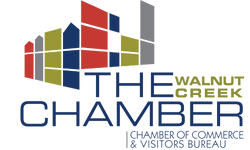Simple Moves That Make Your Business More Accessible and More Trusted
Simple Moves That Make Your Business More Accessible and More Trusted
Creating a more inclusive and accessible small business doesn’t mean tearing everything down and rebuilding from scratch. You don’t need to hire consultants, spend thousands, or roll out corporate-sized training programs to start doing better. Real progress often begins with noticing—what’s missing, who’s left out, and where friction hides in plain sight. Small shifts, when grounded in care, can unlock real connection with customers, staff, and communities that too often get ignored. Inclusion isn’t a checkbox—it’s a choice to respect how different people move through the world and meet them there.
Start with why: It’s not just the right thing to do
Accessibility isn’t a side quest or compliance issue—it’s a growth opportunity hiding in plain sight. Think about your website. Is it functional for someone using a screen reader? Can someone with limited mobility fill out your forms without frustration? These questions aren’t niche—they’re business-critical. Companies that understand the broader accessibility value of their online presence consistently reach more people, earn more trust, and spend less time fielding preventable support requests. Inclusion isn't charity. It’s clarity.
Fix what’s easy first
The fastest wins come from the smallest changes. You don’t need to understand WCAG compliance inside and out to make your digital storefront friendlier. Is your font large enough? Are your buttons too close together on mobile? Tools like UserWay or EqualWeb offer overlays that help with visual adjustments, but even without those, you can start with simple web accessibility improvements like adding keyboard-friendly navigation or using high-contrast color palettes. These are foundational—not advanced—and they often cost nothing but a few minutes of care.
Offer content in more than one language
Not every accessibility gap is visual or physical—language can be a barrier too. For businesses producing podcasts, video tutorials, or training materials, providing translated audio versions is a simple and powerful way to extend reach. You don’t have to become a localization expert overnight. With tools that provide modern audio translator features, you can quickly convert your spoken content into multiple languages. It’s a gesture that tells customers, “We see you. We want you here.”
Identify what you’re forgetting
Most accessibility failures aren’t about tech—they’re about forgetting someone exists. Your homepage loads fine on desktop, but does your image have alt text? Your navigation looks clean, but is it labeled for assistive devices? Forms, dropdowns, and buttons often go unlabeled or untagged, creating invisible walls that shut people out. A quick audit of your site can reveal how often things like missing alt text and labels block users from completing basic tasks. You don’t need to guess—there are tools like Axe and WAVE that help you spot these gaps in seconds.
Think beyond compliance—this is strategy
Accessibility isn’t just a matter of policy or ethics—it’s a business strategy that helps you win in the long run. Accessible design often overlaps with good design, helping all users move more easily and confidently through your offerings. You’ll find that when you reduce friction for one group, you often create flow for everyone else. More importantly, accessibility signals that your business values clarity, responsiveness, and care. That kind of brand behavior builds long-term trust, and there’s growing proof that accessibility drives long-term growth.
Include your team, not just your audience
Inclusion doesn’t stop with customers. Think about your staff, contractors, or vendors—can they all access your digital tools? Are your training materials legible? Can everyone fully participate in team discussions, feedback loops, or software systems? Creating an environment where everyone can contribute without unnecessary friction makes people feel like they belong. Consider using inclusive workplace technology tools to remove those access barriers from your internal operations, not just your marketing.
Don’t ignore the legal risks
Beyond missed opportunities, inaccessibility can cost you—literally. Accessibility lawsuits targeting small businesses have increased dramatically, and most of them don’t stem from intentional harm. They come from avoidable oversights, like a missing label on a button or an unreadable mobile experience. ADA lawsuits are real, expensive, and often preventable with simple, proactive steps. If your site isn’t yet compliant, now’s the time to understand the risk of accessibility lawsuits and what steps you can take to avoid being next.
Inclusion doesn’t demand a big reveal. It starts with asking honest questions about who’s not being served and fixing what you can. Use the tools available. Think about access as something you build into every interaction, not something you paste on at the end. Your business doesn’t need to be big to act with empathy—and that might be the most powerful strategy you’ve got.
Discover the benefits of joining the Walnut Creek Chamber of Commerce & Visitors Bureau and elevate your business with unparalleled community exposure and networking opportunities!
